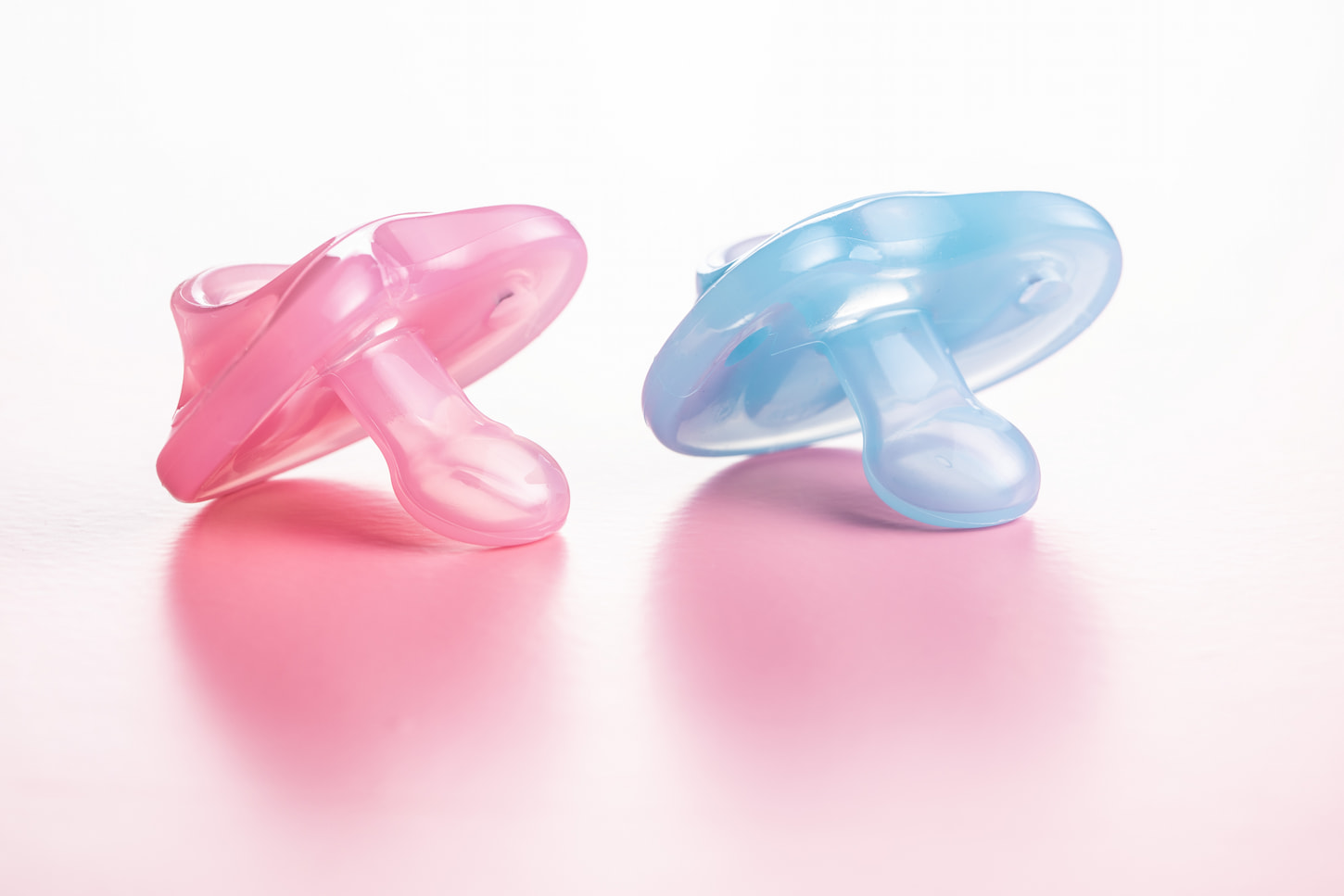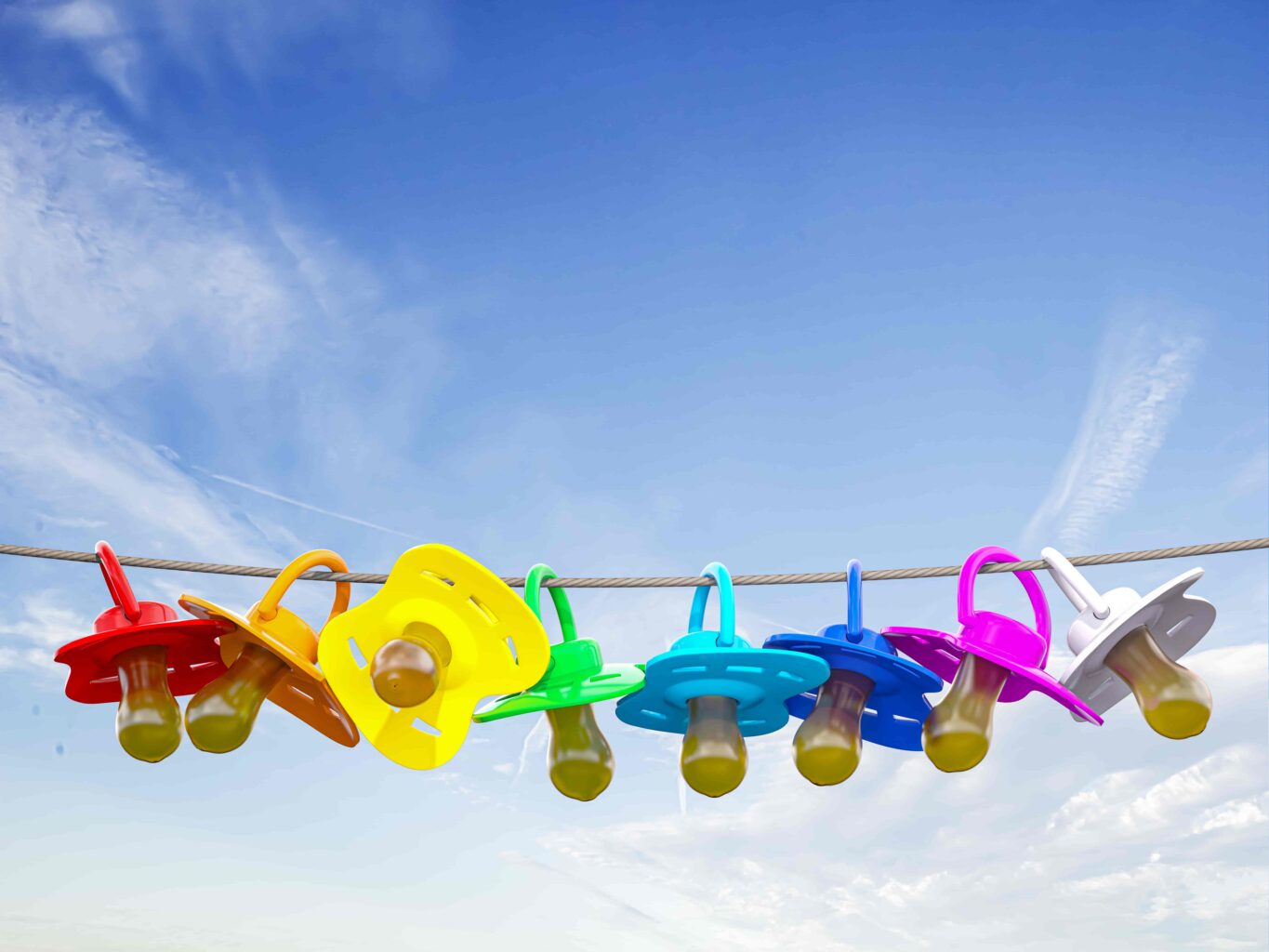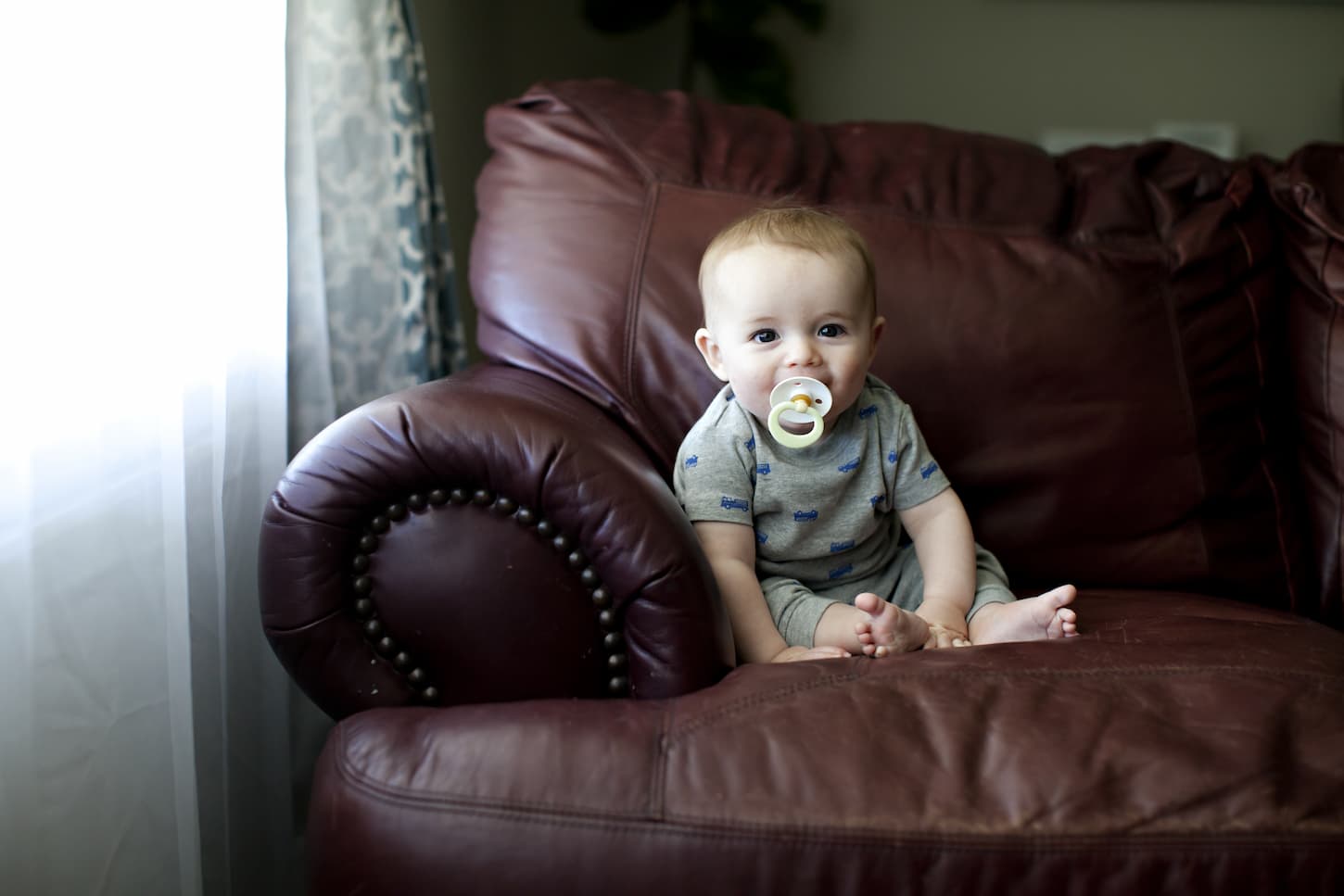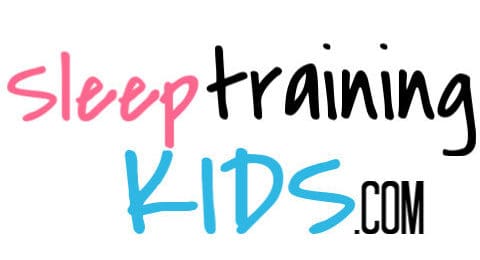Pacifiers are nipple substitutes designed for a baby to suck on when they aren’t eating. They offer comfort and support to a baby, are thought to help prevent sudden infant death syndrome (SIDS), and are a quick way to quiet a baby’s cries.
Pacifiers come in many sizes, shapes, colors, and designs. Sizes depend on age and have three options: 0-6 months, 6-18 months, and 18+ months. Forms are divided based on the nipple shape, and they are either conventional or orthodontic.
Experts usually recommend waiting to use a pacifier after a baby is comfortable breastfeeding. Avoid pacifiers until the mother can nurse without issues. Babies should be ready for their first pacifier at about one-month-old.
Read on for details that will make sense for our babies, make it easier to find the correct pacifier, and whether the difference in size matters.

What Sizes Do Pacifiers Come In?
Pacifiers tend to come in three sizes, based on a baby’s age, with increasing sizes as a baby grows older. The sizes are:
- 0-6 months
- 6-18 months
- 18+ months
The names of sizes vary from brand to brand, but most pacifiers will have recommended ages printed on the packaging.
It’s also possible to buy an all-ages pacifier.
Babies will make the final decision on what is the best size. If they repeatedly spit out their pacifier, it might not be the correct size.
It should be evident from looking at the size of a pacifier nipple if it will be a good fit for a baby. In addition, pacifiers are inexpensive, so it’s not a bad idea to buy a few sizes to find the best fit.
Be aware that while pacifiers are made for children ages 18+ months, many experts recommend weaning babies off a pacifier by 12 months.
After this age, it is still OK for them to use a pacifier if it’s not constantly. Also, make sure the baby no longer uses a pacifier when their permanent teeth begin to grow.
Our family pediatric dentist was fine with my children using their orthodontist-approved pacifiers until the age of 3, although our kids all “graduated” from their pacifiers by the age of 2.
As every situation is different please talk to your pediatrician and pediatric dentist for specific guidelines for your child regarding pacifiers.
What Is the Difference Between Pacifier Sizes?
The difference between pacifier sizes is the size of the nipple and the mouth shield. As a baby grows, their mouth gets larger, becoming more accustomed to sucking—the strength in their mouth and tongue increases. As babies change, their pacifiers will need to change.
Since there aren’t specific measurements for a baby’s mouth, age is an excellent scale based on what we know about an average baby’s growth. These measurements are a guide since babies grow and develop at different rates.
Pacifiers are made from non-toxic soft plastic, silicone, or latex. These plastics are easy to mold into assorted sizes. All brands manufacture pacifiers in similar sizes based on a child’s age.
There is not much difference between pacifier sizes from brand to brand, but there will be distinctive design elements such as colors and patterns.
Brands may also use different terminology for sizes, but we should be able to identify the correct shape and size for our baby visually.
Please note: if your family has a history of latex allergy or sensitivity, please be careful giving a baby a latex-based product. Consult your pediatrician before doing so, as they may recommend starting with a silicone-based binky.
Does Pacifier Size, Age, and Shape Matter?
The size, age, and shape of a pacifier do matter. If the pacifier does not suit a baby, a baby will let the parent know by refusing it. While pacifiers can help prevent SIDS, improperly-fitting pacifiers can become a choking hazard as a baby grows. It is vital to make sure it is the correct size.
When referencing the shape of a pacifier, this relates to the nipple shape. There are conventional and orthodontic shapes. Traditional shapes are more suitable for young infants as their teeth have not yet developed.
For breastfeeding babies, a cherry or cylindrical-shaped nipple is best. The shape design allows the tongue to lift and cup around the nipple in the same manner as breastfeeding.
It’s worth trying either of these shapes first, and if your baby rejects the pacifier, then move on to other conventional forms.
As a baby reaches the 6-month mark and their teeth begin to emerge, plan on transitioning to an orthodontic-shaped pacifier. They have unique designs to avoid damaging a baby’s oral development.
At the age of 6 months, it’s possible to start weaning babies off pacifiers, so if they are unhappy with a new type, it’s time to try eliminating them.
Sucking on a pacifier provides comfort to a baby whether they are trying to sleep or are in a new environment – such as sleeping in someone else’s home.
They also can be a distraction if a child has some discomfort from growing pains or is just feeling a bit fussy. Having a pacifier that is the correct size and shape matters to a baby so they can make the most of its soothing benefits.
When Do You Move Up in Pacifier Size?
Parents will know when to move up a size in pacifiers once their child is nearing the end of the age range for the current pacifier. If the baby is almost six months, it’s worth trying a larger pacifier.
Another feature to look at is the mouth shield – if this is the same size or small as a baby’s mouth, it’s time to move up a size.
It’s essential to pay attention to a baby’s pacifier condition. If there is any sign of damage, replace the pacifier straight away.
Rips or tears can lead to material breaking off and could create a severe choking hazard for your child. The discoloration is another sign of damage, and a replacement is needed.
If the pacifier is still the correct size for a baby’s mouth and not a risk, you don’t have to change the size. However, parents might feel pressured to follow a company’s size guides and swap it out when the baby turns six months.
Our babies will let us know if they are unhappy with their pacifiers. Then, if the baby is content and safe, we don’t have to change to a different size or shaped pacifier.
How Do You Know What Size Pacifier to Get?
When picking a pacifier size, make this decision based on the baby’s age and previous preferences. Pacifiers come in different nipple shapes as well as age sizes. If we notice our child rejecting their current pacifier, it might be time to consider another form.
Tons of money and research has gone into modern pacifier designs to create the best product to safely soothe a baby.
While there are some apparent similarities between brands, there are plenty of options, and making the right choice can seem complicated with an overwhelming selection of products.
Various brands use different names for the exact shape of pacifiers. So, if a parent feels like their child needs a change and is rejecting their pacifier, it’s worth visually comparing what other options are available.
Since we can’t ask babies what they like, there may be some trial and error – but make sure to have a variety of shapes to see which best suits the baby.
A more rounded-shaped pacifier is recommended for younger infants as this is the most like natural nipples and should help the nursing process.
As the baby grows, try a flatter shape, such as a butterfly nipple shape. This type is only advisable if the baby is confident with breastfeeding.
While we can consult with other parents and professionals, we can base the right pacifier size on their reactions.
If a baby has an oral complication, it’s worth speaking to a specialist to identify which pacifier will benefit them most.

How Do You Know When a Pacifier Is Too Small?
If a pacifier shield is smaller than the baby’s mouth, it is too tiny – move up a size to avoid choking. Also, consider the child’s age. If they are too old for a pacifier, it may be worth it to wean them off for good.
Stop using a pacifier when it becomes detrimental to the baby’s health. Then, at six months, start to wean them off their pacifier. This process doesn’t mean taking it away altogether but reducing how much they use it.
There are links between ear infections in babies and pacifier use because continuous sucking can affect the pressure in the ears. Of course, always consult a pediatrician if a child has ear issues.
As the baby’s teeth start to come in, this is another signal that it’s time to move on from pacifiers. Parents can change to orthopedic pacifiers, but continuous pacifier use can lead to dental issues like teeth misalignment by the age of two.
Parents should be able to visually identify if a pacifier is too small for their baby, but they can also use the brand’s age recommendations as a guide.

Key Takeaways and Next Steps
Using the information above, we should be able to navigate purchasing and changing pacifiers for our baby. The main differences between brands are the size and shape. Your baby will be the final decider of what suits them best.
Once we know the correct size and shape, we will be free to choose the cutest color and design that go perfectly with all the baby’s adorable clothes.
Be careful when choosing a style where there are small decals that could easily break off and become a choking hazard.
As the baby grows, we can upgrade the size to fit their larger mouth and if not already using orthopedic pacifiers, plan to switch to them as it will help their teeth.
Now that you know more about pacifiers, you’re ready to tackle our next resource, Sleep Training with a Pacifier: a Complete Guide with FAQs.
Resources
Learning about parenting or sleep training techniques is important to learn from various reputable sources. These are the sources used in this article and our research to be more informed as parents.
- Bartlett, Joshua. “Does Pacifier Shape Or Size Matter? (Plus Buyer’s Guide).” Natural Baby Life, 7 May 2021, naturalbabylife.com/does-pacifier-size-shape-matter.
- Frost, Shelley. “Is It OK for Baby to Sleep With a Pacifier?” Hello Motherhood, 12 Feb. 2021, www.hellomotherhood.com/13683246/is-it-ok-for-baby-to-sleep-with-a-pacifier.
- “Types Of Pacifiers: How To Choose The One That’s Right For Your Baby.” Thomas C Volck, DDS, 15 Mar. 2021, www.drthomasvolck.com/post/types-of-pacifiers-how-to-choose-the-one-that-s-right-for-your-baby-2.
- Hosseini, Sarah. “When Should You Replace Baby’s Pacifier? More Often Than You Think.” Romper, 2 Mar. 2017, www.romper.com/p/when-should-you-replace-babys-pacifier-more-often-than-you-think-41102.
- Peterson, Amy. “Why the Shape of Your Baby’s Pacifier Matters.” Why the Shape of Your Baby’s Pacifier Matters, 13 May 2019, www.evenflofeeding.com/education/feeding-101/why-the-shape-of-your-babys-pacifier-matters.
